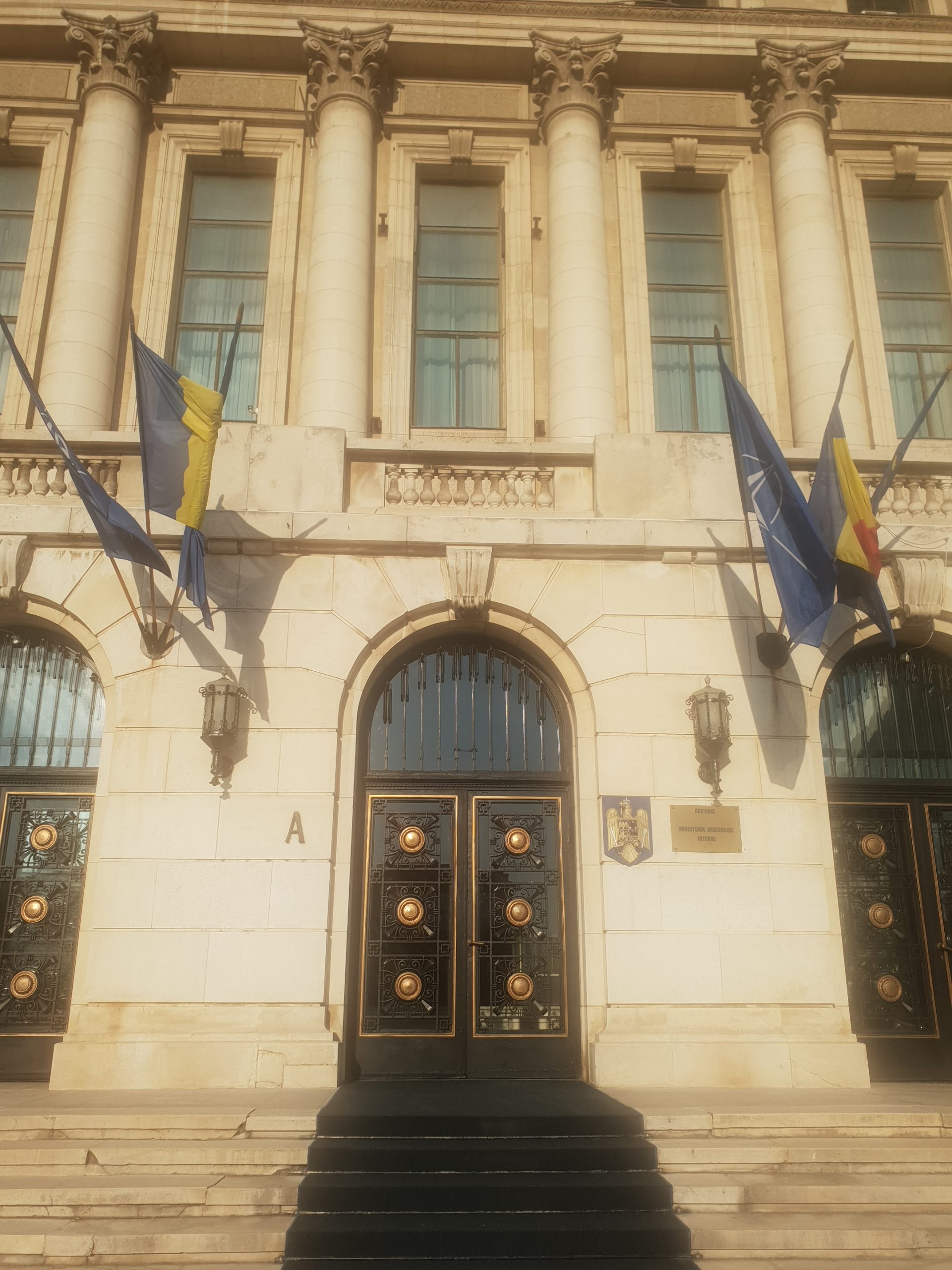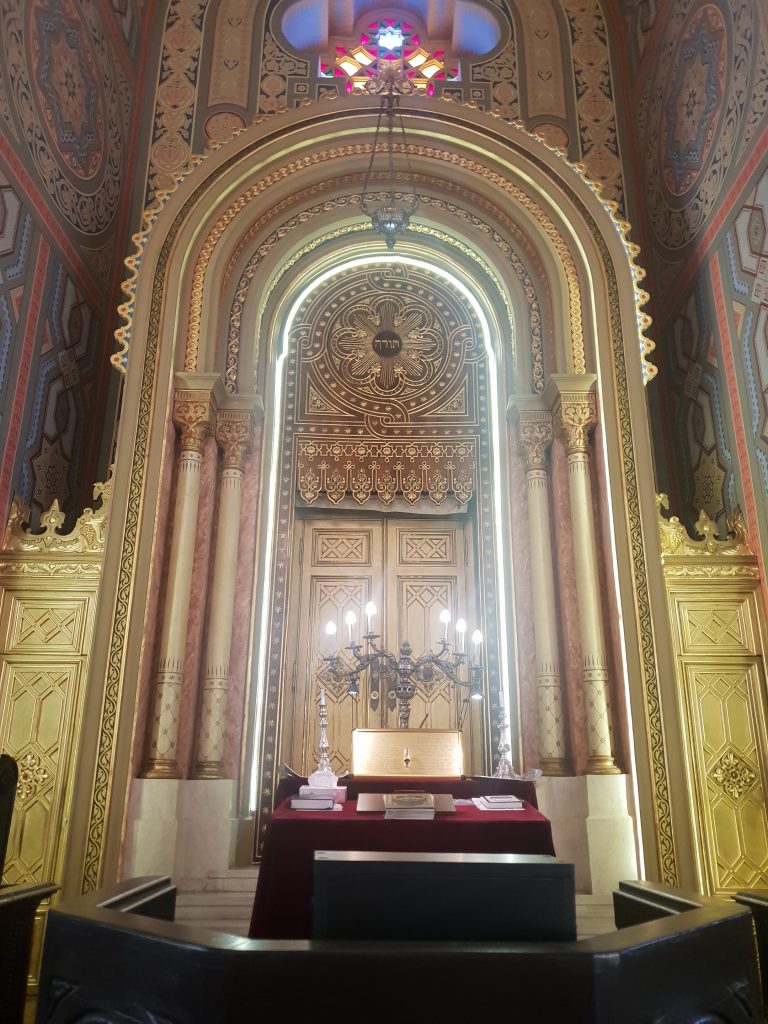Notes from Bucharest
On Ceausescu’s peculiar comeback, the cowardice of Russian elites, and the decline of Jewish communities
Uriya Shavit

I am standing in front of the interior ministry’s balcony in Bucharest.
This is the fourth time I pass there, but only now, on a guided walking tour about the history of communism, I realize it belongs to an image that captivated me in junior high school.
It was December 21, 1989.
The last Stalinist despot in Europe, Nicolae Ceausescu, stood in front of thousands of organized supporters.
Days after vast demonstrations began in Timisoara, West Romania, he was trying to show he was still in control, passionately uttering the usual cliches.
The crowd refused to play its role and remained defiantly silent.
In his desperation, Ceausescu promised to increase wages. To his great shock and horror, the rally turned into an angry demonstration.
The television broadcast was interrupted. A full-scale, bloody revolution began. Four days later, Ceausescu and his wife Elena were executed after a brief trial.
It was the most violent of the liberation revolutions in Eastern Europe, and it gave the final seal to the demise of a system of government that brought oppression and poverty to millions.
The seeming spontaneous events projected – romantically – that no tyrant can stand in the way of a people when united.
Years later, historians argued that much of the ado was staged and that the revolution was guided by the reforming Soviet Union. Or the CIA. Or both.
What actually happened remains subject for debate.
The one issue not debated is that hundreds of Romanian citizens lost their lives in a courageous, brief fight for freedom.
They are commemorated in a hideous monument in what became the Revolution Square, facing the balcony.
History is written with the wisdom of hindsight. Thus, there is a tendency to see the downfall of communism in the late 1980s as inevitable.
It was not.
The communist regimes of Europe were, perhaps, doomed – but could have possibly survived much longer, and wane through much greater bloodshed.
In large part, they collapsed the way they did and when they did because dissidents were willing to fight them, with tremendous costs, also at times when the ultimate defeat of communism was nothing but assured.
A year and a half into the war in Ukraine, it is time to wonder why there are so few such dissidents in present-day fascist Russia.
Their conditions are much better – with the borders still open and with access to Western media easier than in the 1970s and 1980s.
I had a chance to speak with a number of Russian professors and professionals when the scope of Putin’s war crimes was already known. They were remarkably self-centered, whining about the sanctions and about how Russia, a failed kleptocracy, is not respected on the world stage.
These Russians believe that they are in a win-win situation.
It is difficult to judge those who remain silent. But those who actively support the regime in any way should be made to understand that their crimes will never be forgiven.
On the day of Prigozhin’s mutiny (the proof that farce sometimes precedes tragedy), I watched a Russian professor who parroted the regime on the BBC. This Lady Haw-Haw and her likes should be blacklisted by every law enforcement agency and academic institution in the West and, sooner rather than later, pay for their barks.
The so-called oligarchs are a league of their own in the sad affair called Russia. There is now talk in Western capitals about a deal-to-save-legal-ordeals that would allow them to get some of their assets back in return for giving some of it to Ukraine.
A more reasonable deal would be a ticket out of potential prison terms in return for fully conceding their assets and taking a clear stand against Putin.
Moral cowardice in existential wars should be costly.
Putin’s failure to divide NATO and bring the West to its knees is all the more astounding given the public sentiments across the continent.
Romania is a case in point.
In the 1980s, Ceausescu was one of a kind. Reinventing macroeconomics, and without any checks or balances to moderate his growing tyranny, his megalomanic initiatives and determination to wipe out his country’s debt made his version of communism particularly hellish and grotesque.
I was thus surprised to learn from our guide on the communism walking tour that not a few Romanians are nostalgic about the days when they waited hours in line for groceries and gasoline that the utopian regime could not provide.
In a survey done in 2018 by Isogep, 64.3% of Romanians had a favorable opinion of Ceausescu—more than any other Romanian President in modern history.
It is not difficult to find examples in Bucharest.
Says a 27-year-old, self-employed, newlywed, and soon-to-be father:
“Yes, he was a dictator. Yet everything we have in the city that works, that is grand, it is from his time. There were food shortages, but somehow no one was hungry. He brought the country to zero debt, the only country in the world that does not owe anyone money.
“Back then, if someone wandered around the streets at noon, the police would put him in jail for four months. When released, he was forced to find some job, any kind of job.
“Today, we have freedom, but what is this freedom? There is so much corruption, and so much is controlled by the United States and by the European Union. Almost everyone is either poor or very rich and there is hardly a middle class. I don’t long for the communist era, but you have to recognize it for what it was.”
Twenty-seven-years-old. That means he did not experience the horrors himself.
“Oh, a lot of people from my parents’ generation will tell you the same thing.”
Under Ceausescu, home ownership reached the highest level in Europe – 96% percent, according to our guide on the communism tour. The apartments of the ruling class were bigger. “Everyone was equal, but party officials were more equal,” she says. Still, people had a sense of security.
There is a more trivial reason for Ceausescu-stalgia. “Many of today’s grownups were children back then. What they actually miss is their childhood.”
The most imposing of Ceausescu’s lunacies is the gratuitously large Palace of Parliament. Only a Pharaoh would launch such a project.
Sadly, tourists come to Egypt for the pyramids, and the Palace of Parliament became the symbol of Bucharest and a main tourist attraction.
When it comes to grandeur, functioning democracies have a handicap: they work to benefit their societies, not to immortalize their leaders.
Communism is not the only shadow that haunts Romania.
During the Second World War, it allied with Nazi Germany. Approximately 400,000 Romanian Jews, half of the Jewish population, were murdered in the Holocaust, the majority at Romanian hands.
Legislation to require comprehensive teaching of those crimes in Romanian high schools is now the focus of public debate.
The rising political force in the country, The Alliance for the Union of Romanians (AUR), opposes the plan. Its leader argues that the Holocaust should be taught only in the broader context of Romanian history.
That the country does not do a good job in dealing with its pro-Nazi past is obvious, even for a passerby.
An exhibition at the National Museum celebrates the life of Mircea Carp, a journalist who fought communism from exile. He is 100. The exhibition discusses his time in a training camp in Nazi Germany as if that is a normal, morally justifiable part of a patriotic CV.
Some Romanians try to make a difference.
I meet Luniana Mindru in her office at the center of Bucharest. She is Program Coordinator at American Councils for International Education in Romania.
Since 2017, the organization has taken annually 15 university students on an Eli Wiesel two-week study tour in several European countries to learn about the Holocaust and its lessons.
Mindru said last year they had 160 applications—more men than women, with a surprising presence of applicants from military schools.
Upon completing their program, participants organize workshops on the Holocaust in their universities. So far, facing the dark pages of Romania’s past was a task all participants managed. Those who register have some prior interest and empathy for the topic to begin with.
The initiative is largely financed by the United States but started and is run by Romanians.
At the Choral Synagogue in Bucharest, I meet the Gabai, Hazan, and Guide. He introduces himself as Gilbert Shein. He is 50. I never met a person who talks so fast.
Shein says Jews in Romania, including those visibly identifiable as such, do not face antisemitic-motivated physical attacks. Verbal attacks are rare.
That does not mean that Romanians recognize the crimes of their fathers. “Ask people on the street, they will say Romanians were not responsible for killing Jews. That they were victims in the war. There is no serious education about the Holocaust in schools.”
Romanian Jewry is a forgotten community. Pioneers of Zionism and one of the largest extractions, their contribution to Israel has never been duly recognized.
According to Shein, only 3,000 Jews live in Romania today. On an average Saturday, the synagogue, one of the most beautiful in Europe, brings together no more than 30 attendees.
A partition wall was placed in the middle of the hall because most female attendees are in their eighties and cannot climb the stairs to Ezrat Nashim.
The synagogue is more a relic and a museum than the prayer house of a vibrant community.
The challenge repeats itself across Europe. Dwindling Jewish publics are largely secular. Synagogues cannot bring them together as a community and preserve their identity.
A few days before visiting Romania, I was in Vidin, north-west Bulgaria, where the beautiful local synagogue has been reconstructed and will open in September.
There are no more than 20 Jews in Vidin. The revived synagogue will thus serve as a general exhibition hall—a reminder of a Jewish past, not a hub for a Jewish presence.
Shein said most Israelis who visit Bucharest, and thousands do, do not visit his synagogue. They have other priorities.
The second surviving historical and equally beautiful synagogue in Bucharest, Mare, became a Holocaust museum. The exhibition is dull and largely in Romanian.
There are plans to build a more advanced museum, but for now, they are just plans.
On a Friday morning, at the height of the tourism season, the museum is empty.
I cannot blame Israelis who do not wish to spend their summer holiday in the footsteps of the challenges to democracy or the fragility of Jewish existence.
It is 37 degrees outside. At the ice cream shop, a child cries to his mother in Hebrew, “You said we’ll go swimming.”
This summer offers no escape.


